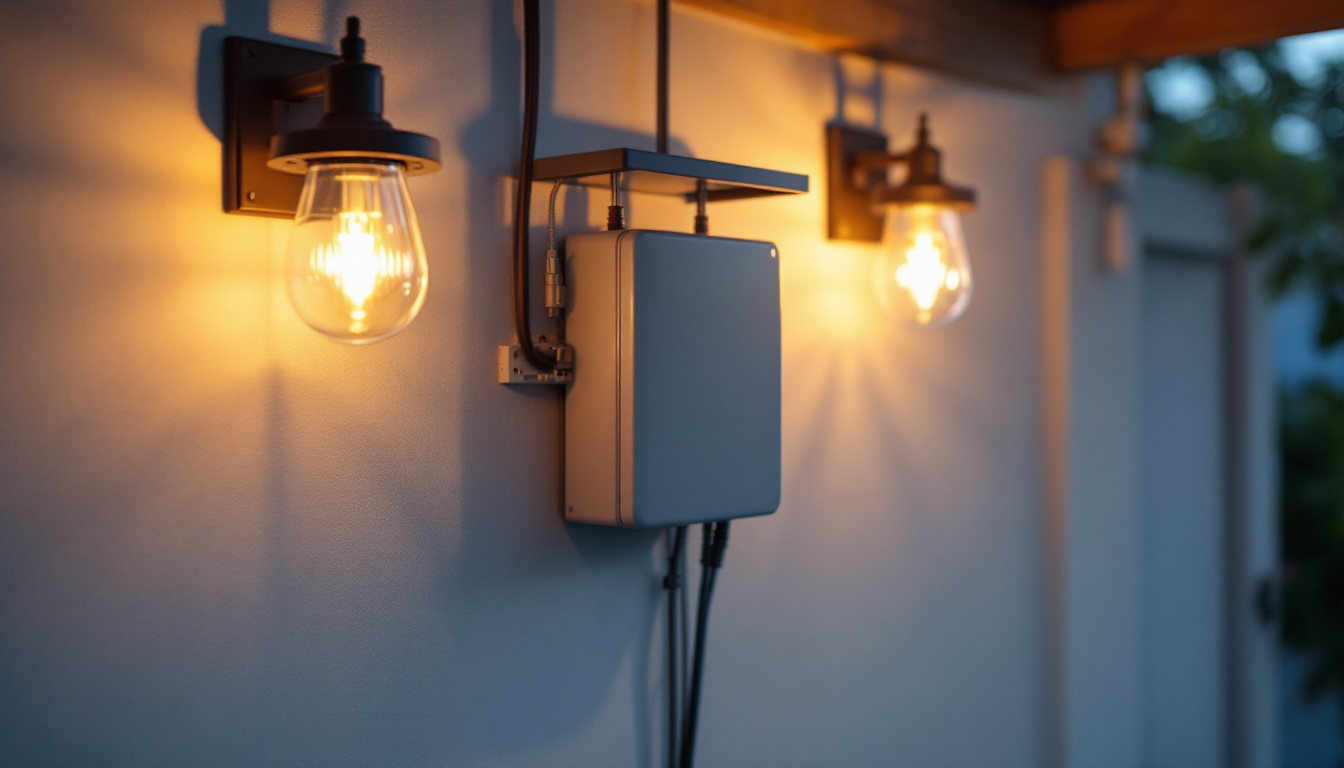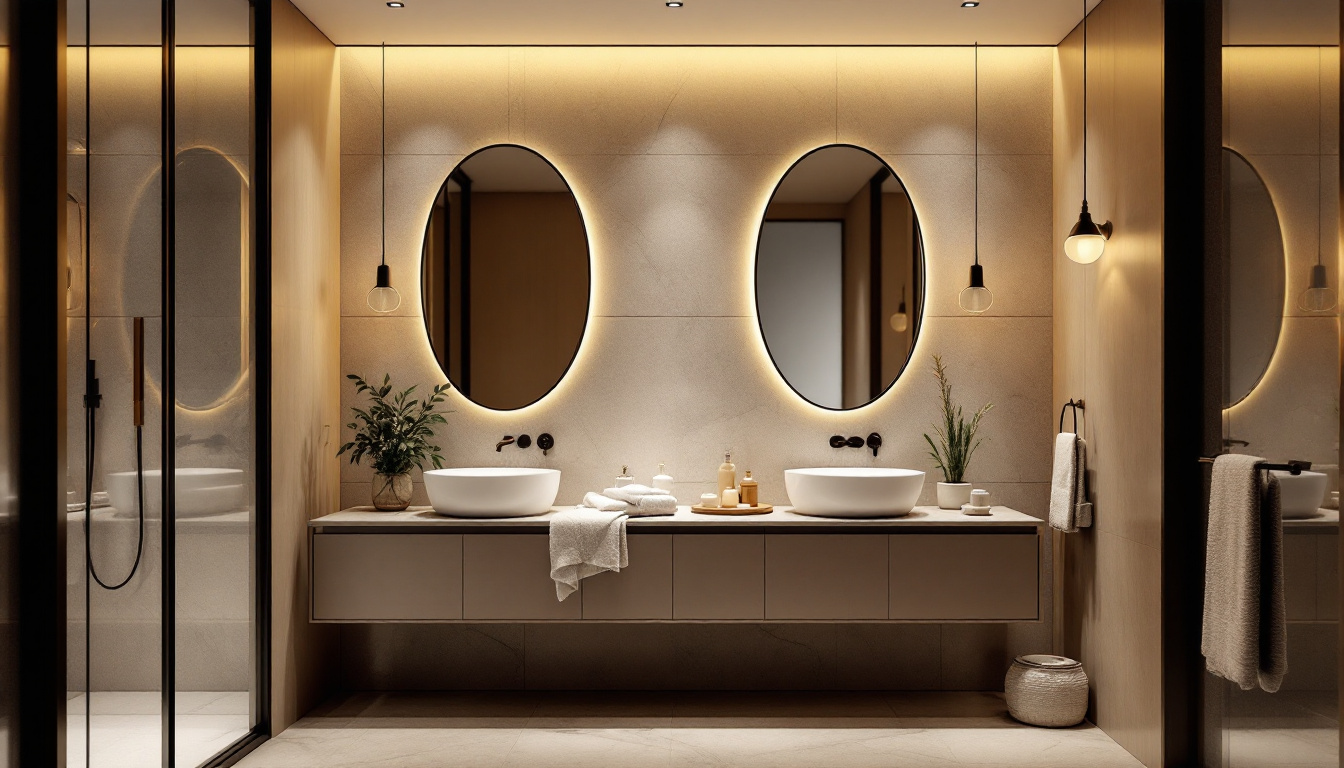

In the rapidly evolving world of lighting technology, sensor lights have emerged as a popular choice for both residential and commercial applications. These innovative lighting solutions not only enhance security but also contribute to energy efficiency. However, for lighting contractors, the installation and maintenance of sensor lights can present unique challenges. Understanding these challenges and knowing how to avoid common pitfalls is essential for ensuring customer satisfaction and successful project completion.
Before delving into the potential issues associated with sensor lights, it is crucial to understand what they are and how they function. Sensor lights are equipped with motion detectors that activate the light when movement is detected within a specified range. This technology can be utilized in various settings, including outdoor pathways, parking lots, and indoor spaces. The integration of sensor lights into both residential and commercial environments has become increasingly popular, as they not only enhance safety but also contribute to energy efficiency.
There are several types of sensor lights available on the market, each designed to meet different needs. The most common types include:
Sensor lights offer numerous benefits that make them an attractive option for clients. They provide enhanced security by illuminating areas when movement is detected, deterring potential intruders. Additionally, they contribute to energy savings by ensuring lights are only on when needed, which is particularly advantageous for businesses looking to reduce operational costs. Furthermore, sensor lights can improve convenience in daily life; for instance, homeowners can walk into a dark garage or entryway without fumbling for a switch, as the lights will automatically turn on as they approach.
Moreover, the use of sensor lights can significantly enhance the aesthetic appeal of a property. By strategically placing these lights along pathways, gardens, or architectural features, homeowners can create a welcoming ambiance while ensuring safety. Many modern sensor lights also come with adjustable settings, allowing users to customize the sensitivity and duration of illumination, which can further optimize their functionality. This adaptability makes sensor lights not just a practical choice, but also a versatile one that can complement various design styles and preferences.
While sensor lights offer many advantages, they can also present challenges during installation and maintenance. Being aware of these issues can help lighting contractors navigate potential pitfalls.
One of the most significant issues with sensor lights is improper placement. If a sensor is installed in a location where it cannot effectively detect motion, it may lead to frustration for the client. For instance, placing a sensor too high or too low can limit its range and effectiveness. Additionally, environmental factors such as trees, buildings, or fences can obstruct the sensor’s view.
To avoid this issue, contractors should conduct a thorough site assessment before installation. Understanding the layout and potential obstructions will help ensure that the sensors are placed in optimal locations for maximum effectiveness. Moreover, it is beneficial to consider the typical movement patterns of individuals in the area. For example, if the sensor is intended for a pathway, it should be positioned to detect movement from the direction of foot traffic, rather than facing away from it. This attention to detail can significantly enhance the functionality of the lighting system.
Another common issue is the sensitivity settings of the sensors. If the sensitivity is set too low, the lights may not activate when needed, leaving areas inadequately lit. Conversely, if the sensitivity is too high, the lights may trigger unnecessarily, leading to energy waste and annoyance for the client.
Contractors should take the time to explain the sensitivity settings to clients and adjust them based on the specific environment. A well-calibrated sensor will enhance user experience and satisfaction. Additionally, it may be helpful to provide clients with guidance on how to adjust these settings themselves, should their needs change over time. This empowers clients to take control of their lighting environment and ensures that the system remains effective in various conditions, such as seasonal changes that might affect motion detection.
Electrical issues can also pose significant challenges during the installation of sensor lights. Inadequate wiring or faulty connections can lead to malfunctions, resulting in lights that do not operate as intended. Additionally, older buildings may have outdated electrical systems that are incompatible with modern sensor technology.
To mitigate these risks, contractors should conduct a comprehensive electrical assessment before installation. Ensuring that the wiring is up to code and compatible with the sensor lights will help prevent future issues. Furthermore, it is advisable to educate clients about the importance of regular maintenance checks on their electrical systems. This proactive approach can help identify potential problems before they escalate, ensuring that the lighting remains reliable and effective. By fostering a collaborative relationship with clients regarding their electrical systems, contractors can enhance overall satisfaction and trust in their services.
To minimize the potential issues associated with sensor lights, lighting contractors should adhere to best practices during the installation process. These practices not only enhance the functionality of the lights but also improve client satisfaction.
A detailed site assessment is essential for successful sensor light installation. This assessment should include evaluating the area for potential obstructions, determining the best locations for sensor placement, and considering the specific needs of the client. Engaging with the client during this process can provide valuable insights and ensure that their expectations are met.
During the assessment, it is also important to consider the type of sensor that will be most effective for the environment. For instance, outdoor sensors may require weatherproofing, while indoor sensors may need to account for furniture placement.
Education is a crucial aspect of the installation process. Lighting contractors should take the time to explain how sensor lights work, including the different types available and their respective benefits. Providing clients with information about sensitivity settings and maintenance requirements can empower them to make informed decisions and enhance their overall experience.
Additionally, contractors should encourage clients to share their preferences regarding light activation times and sensitivity levels, ensuring that the final setup aligns with their needs.
Once the sensor lights are installed, thorough testing and calibration are imperative. This step ensures that the lights function correctly and meet the client’s expectations. Testing should include checking the range of motion detection, adjusting sensitivity settings, and verifying that the lights activate as intended.
After testing, contractors should walk through the area with the client to demonstrate the functionality of the sensor lights. This not only builds trust but also allows for any last-minute adjustments based on the client’s feedback.
Proper maintenance of sensor lights is vital for ensuring their longevity and effectiveness. Lighting contractors should provide clients with guidance on maintenance practices to help prevent issues down the line.
Encouraging clients to conduct regular inspections of their sensor lights can help identify potential issues before they escalate. This includes checking for dirt or debris that may obstruct the sensor’s view, as well as ensuring that the lights are functioning correctly. Regular inspections can also help identify any electrical issues that may arise over time.
Contractors can offer maintenance services or provide clients with a checklist of items to review during their inspections. This proactive approach can enhance client satisfaction and reduce the likelihood of future problems.
As technology continues to advance, older sensor lights may become outdated or less effective. Lighting contractors should stay informed about the latest developments in sensor technology and recommend upgrades to clients when necessary. This not only improves the functionality of the lighting system but also enhances energy efficiency.
Clients may appreciate the opportunity to invest in newer, more advanced sensor lights that offer improved features, such as smart technology integration or enhanced motion detection capabilities.
Finally, offering ongoing support to clients can significantly enhance their experience with sensor lights. Contractors should be available to answer questions, address concerns, and provide troubleshooting assistance as needed. This level of support fosters trust and encourages clients to reach out for help when issues arise.
Providing clients with contact information and clear instructions for seeking assistance can make a significant difference in their overall satisfaction. Additionally, contractors may consider offering maintenance packages that include regular check-ins and support services.
Sensor lights represent a valuable addition to modern lighting solutions, offering enhanced security and energy efficiency. However, lighting contractors must navigate various challenges associated with their installation and maintenance. By understanding common issues, adhering to best practices, and providing ongoing support, contractors can ensure successful projects and satisfied clients.
In a competitive industry, the ability to effectively manage sensor light installations can set contractors apart and lead to long-term relationships with clients. Embracing the latest technology and maintaining a commitment to quality service will ultimately contribute to a thriving business in the ever-evolving landscape of lighting solutions.
Ready to elevate your lighting projects with the best sensor lights on the market? Look no further than LumenWholesale, where we provide contractors with superior, spec-grade lighting products at unbeatable wholesale prices. Say goodbye to local distributor markups and hello to high-performance lighting that meets the highest industry standards. With LumenWholesale, bulk buying is a breeze, thanks to our hassle-free process and free shipping. Don’t compromise on quality or value—visit LumenWholesale today to find premium lighting solutions that blend quality, affordability, and convenience for your next installation.

Discover the essential checklist for lighting contractors with our comprehensive guide on 4 ft LED light fixtures.

Discover the essential answers to lighting contractors’ most common questions about electrical boxes outside.

Discover essential insights for lighting contractors in this comprehensive guide on light bulbs.

Discover essential insights into bathroom lighting that every contractor should know.
Get notified when NEW deals are released.
Optimize your budget with wholesale discounts.
Only top-quality, specification-grade lighting products.
No additional costs at checkout - what you see is what you pay.
We understand the unique needs of contractors.